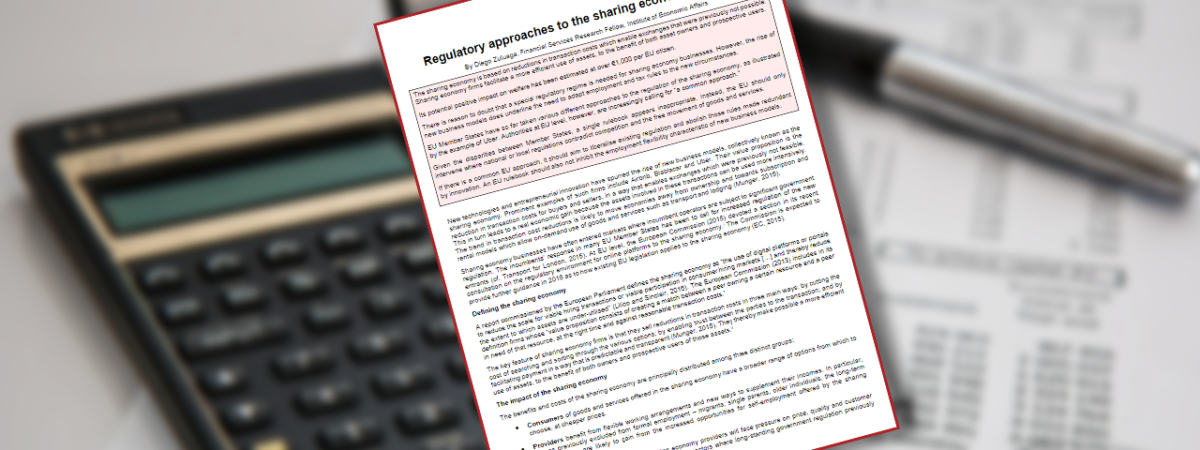Without Delay: Getting Britain’s Railways Moving
SUGGESTED

The twenty-second edition of the Heritage Foundation's popular survey of economic liberty

New IEA briefing explains the economic principles of the sharing economy

Abolishing Network Rail could save families £180 each year
- The renationalisation of rail infrastructure has not been a success. Network Rail has been plagued by crisis after crisis, with major projects hit by delays, mismanagement and very large cost overruns. By the end of financial year 2014-15 the firm had missed 30 out of its 84 planned milestones in its Enhancements Delivery Plan. Network Rail’s problems echo those suffered by the inefficient nationalised industries of the post-war period.
- Rail subsidies remain high, with the industry costing taxpayers £5 billion in 2014/15. The true level of government support has been disguised by increases in Network Rail debt, which in 2015 reached an astounding £38 billion. It is likely to surpass £50 billion by 2020, representing a major long-term burden on future generations.
- The railways had been returned to the private sector in the mid-1990s, at the tail end of the privatisation programme. However, unlike the light-touch approach of the 19th century, the sector was subject to strict regulation. A complex artificial structure was imposed on the industry, which separated track and train. Much of the network was subject to price controls. Rather than full-blooded privatisation, the model could more accurately be described as a public-private hybrid.
- Despite severe regulatory constraints, private train operators were able to bring entrepreneurship and innovation to the sector, including improved marketing and the introduction of very low-cost, off-peak fares. Where allowed, competition between different operators brought benefits such as improved customer service, additional direct trains and lower fares.
- Passenger traffic has doubled since privatisation, while fares have risen broadly in line with average earnings. Punctuality has remained at roughly the same level as under British Rail and there appears to have been little increase in overcrowding over the last fifteen years. Safety has continued to improve. Many of the common criticisms of the post-privatisation industry are misplaced.
- The sector has however remained heavily dependent on taxpayer funding. The level of financial support from government has increased significantly compared with the British Rail years, yet there has been no step change in outcomes according to several key measures. In terms of cost-effectiveness, the sector’s performance has been relatively poor.
- The rail industry is a good example of how political interference can prevent privatisation from delivering the expected benefits. A combination of heavy regulation and dependence on state subsidies meant that many of the potential benefits did not materialise. Instead, a ‘distributional coalition’ of special interests developed, which focused on obtaining financial support and regulatory favours from government.
- A successful privatisation model would wean the industry off state support and allow its structure to evolve to more cost-effective organisational forms through mergers and demergers. There is strong evidence that a liberalised railway would exhibit a far higher degree of vertical integration than the current state-imposed model.
- Private railways should be free to cut costs by closing loss-making lines and services, to introduce ‘super-peak’ fares to tackle overcrowding, to offer cut-price ‘economy class’ options such as standing-only carriages and to determine an appropriate level of safety expenditure.
- Effective reform would face severe opposition from the special interests that depend on rail subsidies and industry regulation. It could also require a renegotiation of EU directives, if the UK chooses to remain within the bloc.
This paper featured in The Guardian, CityAM, The Times and The Daily Mail. Richard Wellings also appeared on BBC Radio 5 Live to discuss the key themes of the report.
2016, Discussion Paper No. 69
To read the press release click here
Fullscreen Mode




